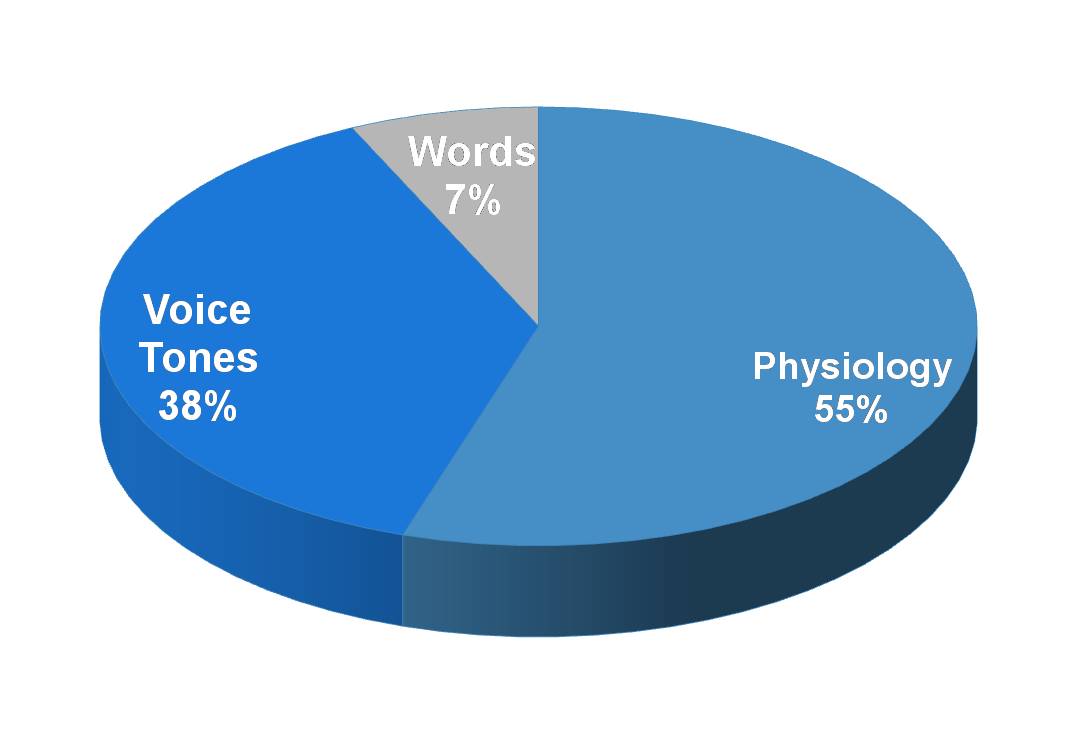
Non-Verbal CommunicationHere's a demonstration of non-verbal communication. Non-verbal communication is when we communicate in ways other than using the spoken word. Research reveals that 93% of communication is non-verbal, so it is crucial that we learn and pay attention to this most important skill.
Our bodies speak volumes. We are always sending signals to others, whether we like it or not. Body language combined with vocal tone can easiy override or even cancel the meaning of the words we say as demonstrated in this video. Make sure your mouth and your body are sending the same signal. Non Verbal Body LanguageEyes, eyebrows, and mouth send out non verbal signals that can make a world of difference. A smile is a great example of non-verbal communication. Because people who smile are happier than those who don't, you can appear happy even when you aren't... simply by smiling. You will discover that when you smile it not only communicates with others, it also communicates with your own brain and makes you happier. Communication pros use extensive eye contact helps you carry your message to each person in the audience and it builds trust. Speak with your hands.
Use non-verbal signals to be sincere and comfortable.
Non verbal signals of tensionOne of the most important things you can do with body language is learn to pick up cues from people that you are making them uncomfortable.
If you sensitize yourself to these simple cues, over time, people will have the experience of feeling more relaxed, at ease, and open with you (and to you). These are the first signals of tension and indicate that the person feels intruded upon or nervous. If it escalates, these signals are often followed by:
Learn to watch for these, and then adjust your approach. Sometimes just taking one step back, or ceasing talking and getting the other person to talk to you instead, will be all it takes to be a more effective communicator. Non Verbal Communication Guide
| ||||||||||||||||||||||||||||||||||||||||||||||||||||||||||||||||||||||||||||||||||||||||||||||||||||||||||||||||||||||||||||||||||||||||||||||||||||
Self-Study Communication Course
-
The psychology of communication
-
Two day seminar condensed to 10 CD's
-
50+ page workbook
- More details...

Copyright © 2009 • Paul Endress / Maximum Advantage • 800-788-2068



